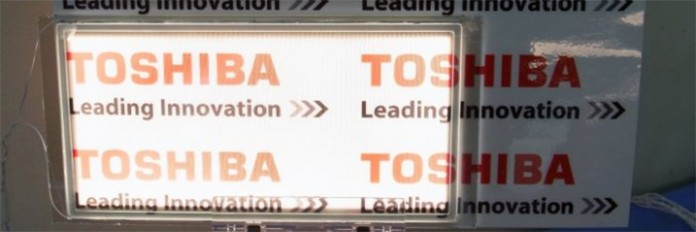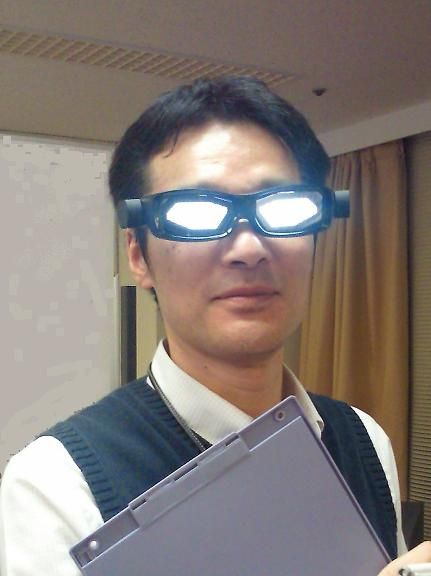Display Week is happening right now and as one of the world’s largest manufacturers of panels Toshiba visa is showing off its latest developments. Among the technologies that will be shown at the event we find a see-through OLED panel with some interesting properties.
See-through monitors and panels are not new, and we have seen the concept in numerous incarnations or more or less useable products. The idea is alluring, since the technology can be used with interactive glasses like Google Glass, show the speedometer directly on the windshield of the car, or why not watch the morning news on the kitchen window?
There are already specialized products that use see-through panels, even if the technology is young and costs a lot. A problem that many of these are struggling with is lighting. Most see-through panels completely lack backlighting, and will need to be placed in front of another source of light for comfortable viewing.
There are OLED panels that are see-through, but at the same time have integrated lighting. Such panels use electrodes made from indium-tin-oxide. The problem here is that the light spreads from both side of the panel, simply because it is see-through, and partly because the panel is no longer really see-through when the lighting is active.
Screen on one side, window on the other
Toshiba has tackled these issues through a technology called Transmissive Single-sided Light Emission OLED Panel. Instead of using see-through diodes and electrodes it uses metal electrodes that are not see-through, and these are then placed in a stripe pattern. More specifically 140 micrometer thin metal stripes, placed 500 micrometer, or 0.5 millimeter, apart.
The metal electrodes emit light in one direction only. The space between the electrodes cannot produce light, but are see-through, which means light can travel both ways. The result is that when the lighting is on it is only displayed on one side of the panel – the other is still see-through.
There are many uses for such a technology. Partly in computer and mobile industry, where it can be used in Google Glass-like products or see-through monitors, but also other areas could gain from this. For example you could build an aquarium where the fish see a vivid undersea landscape, while you only see your fish. Or a magnifying glass that also light up what you are trying to study.
The panel has an energy consumption of 0.7 – 1.6 watt, a color temperature of 3300 Kelvin and brightness of 450 – 800 nits (where the ratio between front and back is 70:1). Toshiba is planning to market the technology, but it is unclear when we might find it on the market in retail products, or what the technology might cost at launch.
The technology was shown at Lighting Japan 2013 in January, but will also be shown during Display Week. More information should become available later this week.
















